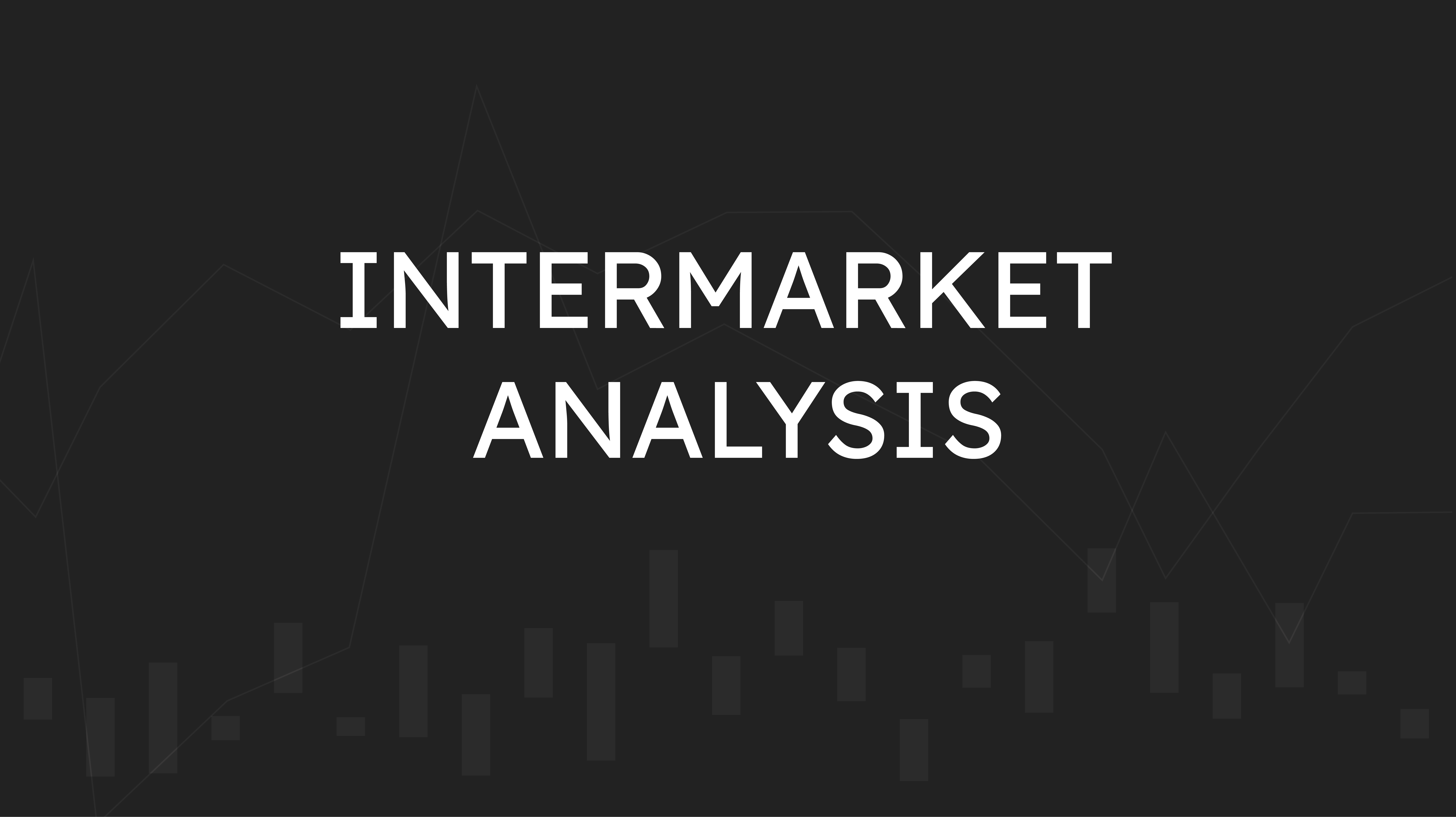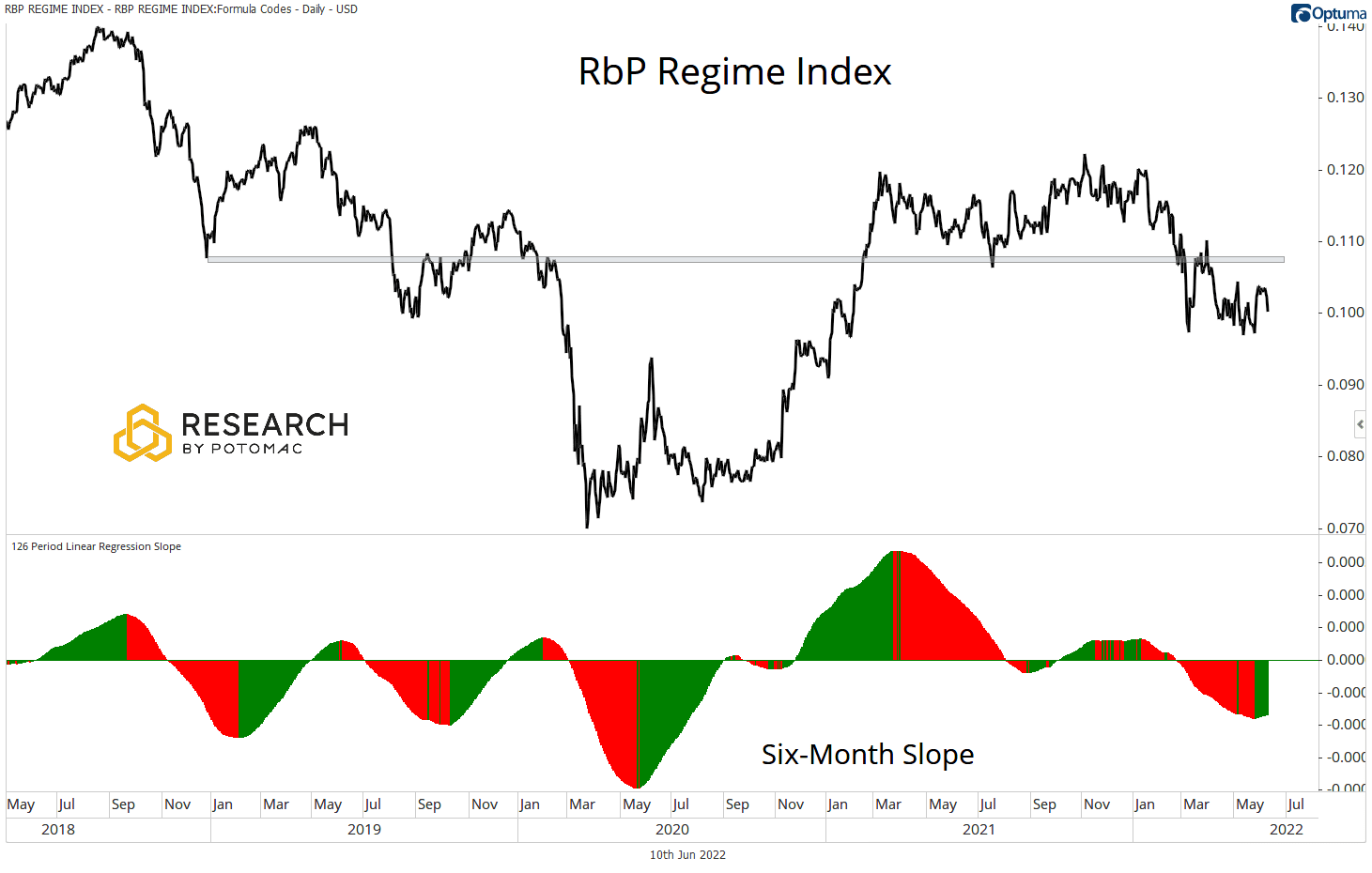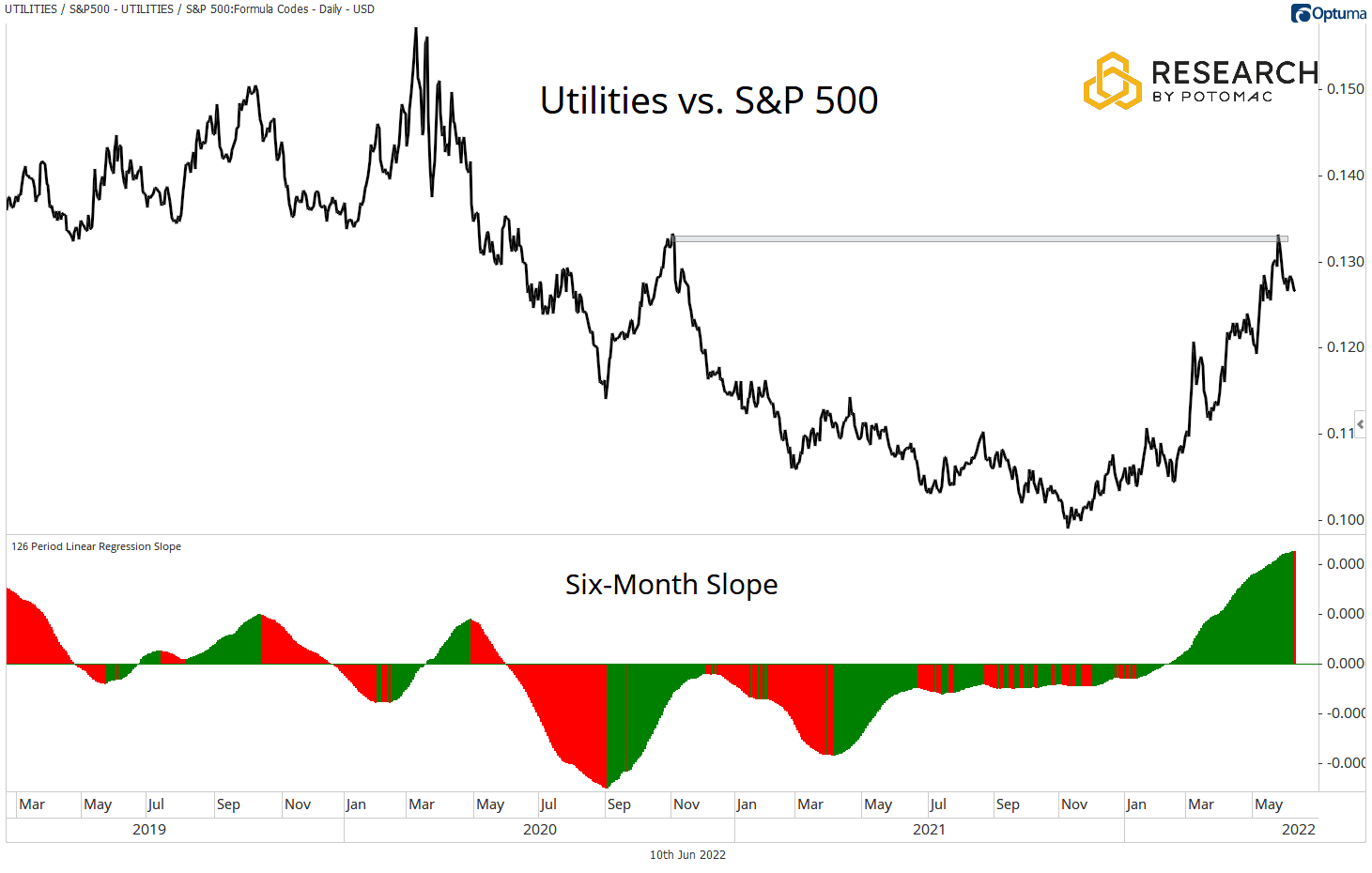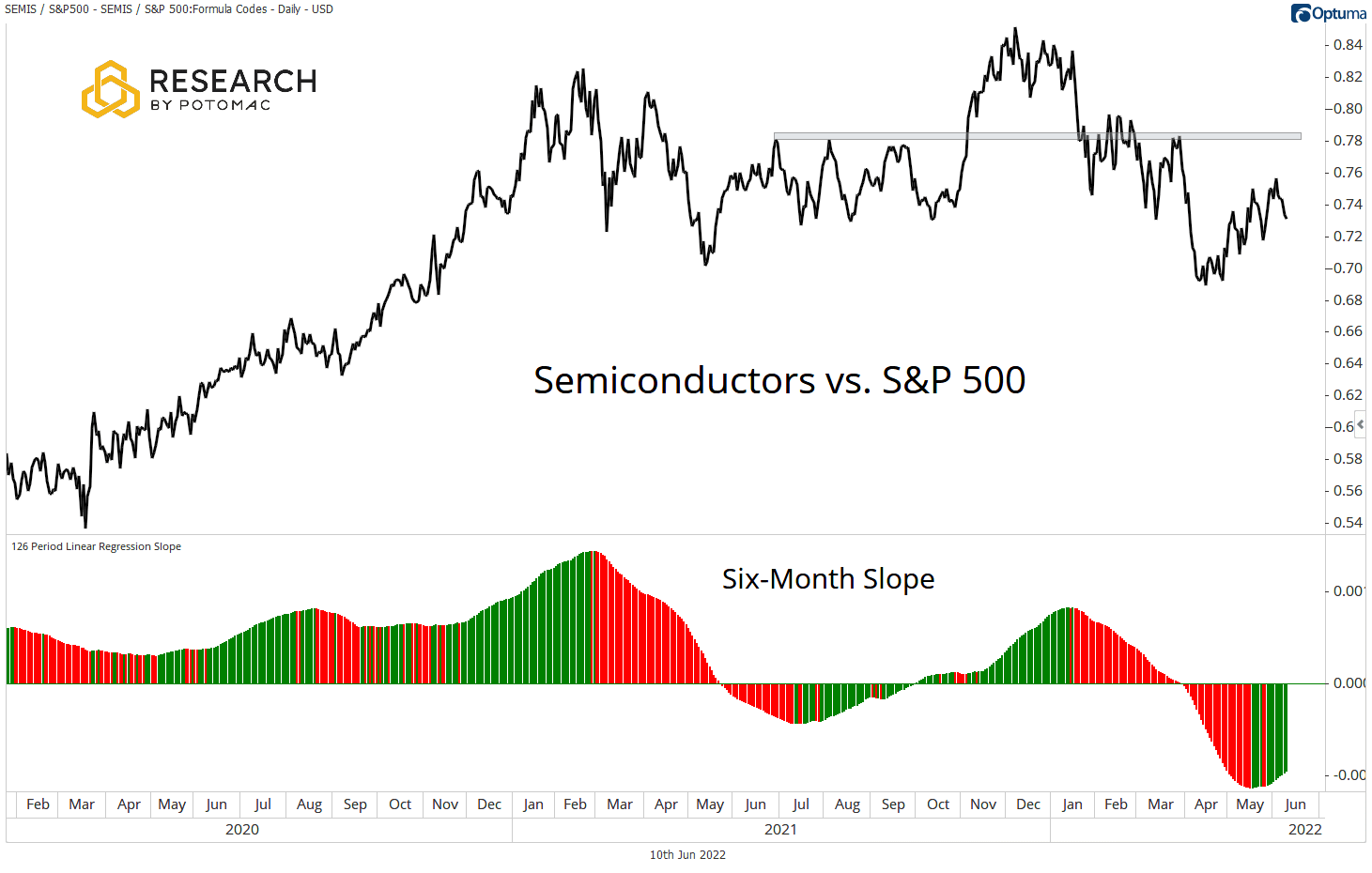
As the equity market fails to maintain upside traction on rally attempts, we highlight three key intermarket relationships that have been acting as a headwind to rising stock prices. All three remain under pressure, though their pace has been decelerating of late. If they can reverse course, it would go a long way in supporting a bullish thesis on equities. Unfortunately, we can’t make that case at this point.
The first chart that bulls would like to see moving in the opposite direction is the RbP Regime Index. This is a custom index that looks at relationships across equities, fixed income, and commodities. Rising trends trend to coincide with rising risk appetites on the part of investors. The index spent most of 2021 in a consolidation before turning lower to start 2022. The index is currently below resistance signaling, confirming the bearish price action in equity markets.
The six-month slope in negative, indicating a downtrend. However, the rate of the decline has been decelerating of late.

The second chart that bulls want to see “improve” is the relationship between Utilities and the S&P 500. In this case, improve means turn lower. Leadership on the part of Utilities is generally not a bullish signal. The Utes have been outperforming the S&P 500 since the start of the year. The ratio has reached the November 2020 peak and backed off a bit. A continuation lower would be a welcome development for equity bulls. However, if that resistance level is breached, odds favor further weakness in the broader equity market.
The six-month slope has been on the north side of zero since February. There has been a slight decrease in the rate of acceleration.

The last chart that bulls want to see improve is the relationships between Semiconductors and the S&P 500. As “the chips” have become a larger part of our day-to-day lives, the performance of this industry group has tended to move closely with the broader equity market. When the semis are leading, that has generally been a bullish indicator for stocks. The ratio peaked in December, one month before the S&P 500, and has been trending lower since.
The six-month slope is also below zero, but the rate of decline has been decelerating of late.

Disclosure: This information is prepared for general information only and should not be considered as individual investment advice nor as a solicitation to buy or offer to sell any securities. This material does not constitute any representation as to the suitability or appropriateness of any investment advisory program or security. Please visit our FULL DISCLOSURE page.
